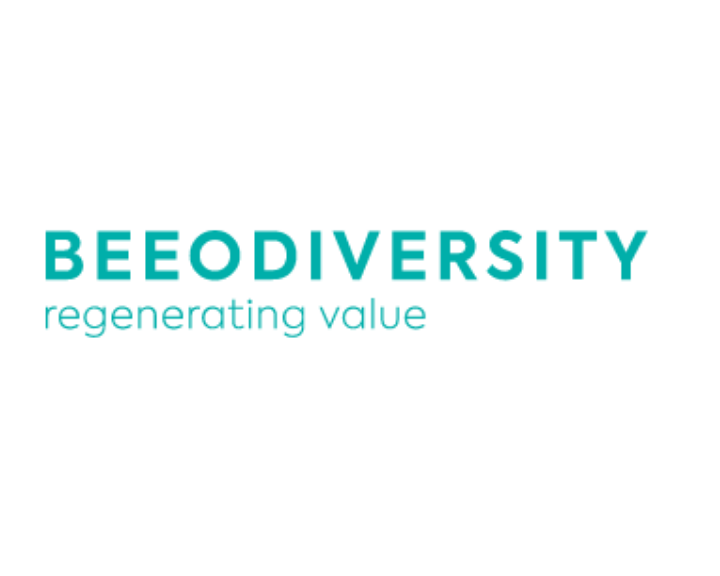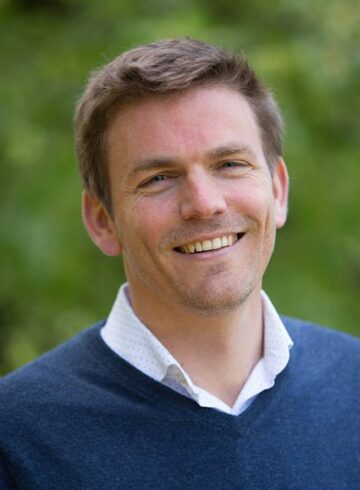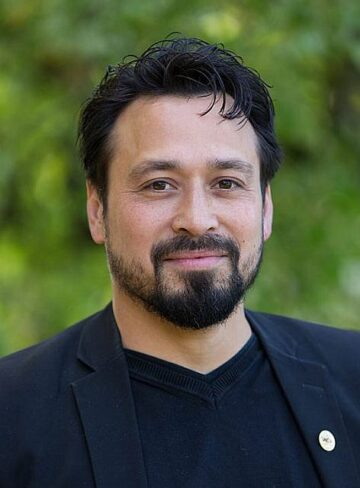BeeOdiversity is a Belgian company specialized in the restoration of biodiversity and the reduction of industrial and agricultural pollution, acting in port cities. Their actions accompany the sustainable development of port cities on three of the objectives of the 2030 Agenda of the AIVP: N°8. City – port interface, N°9. Health and quality of life, N°10. Protecting biodiversity. Dr. Bach Kim Nguyen & Michael van Cutsem, founders of the company, share with us the motivations which led the company to join AIVP.
BeeOdiversity is an AIVP member since January 2022
AIVP – You recently joined AIVP. Can you explain to the other members of our international network how your business was created, and what solutions you provide?
Dr. Bach Kim Nguyen & Michael van Cutsem, BeeOdiversity – BeeOdiversity came about as a result of Dr. Bach Kim Nguyen and Michael van Cutsem‘s commitment to taking action to protect biodiversity, especially bees and their ecosystem. Bach Kim is a world-renowned authority on the issue of bee decline and the loss of biodiversity, and sits on a number of international panels of experts. After completing his PhD on this topic and working as a research and teaching assistant at the University of Liège (Gembloux Agro-Bio Tech), he wanted to translate his findings on paper into reality. After initially working as a lawyer, Michael turned entrepreneur, helping a host of SMEs to expand their business. He decided to devote his skills to a project that would provide a positive impact for future generations.
In 2012, they founded BeeOdiversity in a concrete demonstration of their belief in the cause of social entrepreneurship – making business work for nature and humanity. Since its inception, many who share and are committed to these same values have joined their team.
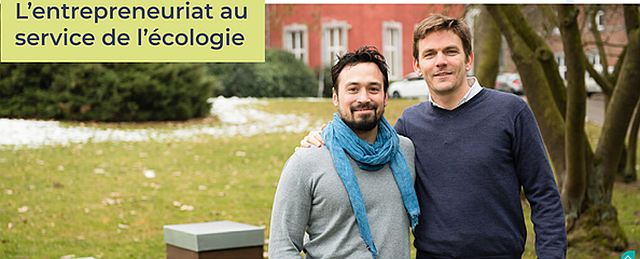
BeeOdiversity is a consultancy and environmental design agency. We create value by regenerating biodiversity and reducing pollution (industrial and agricultural). We offer invaluable support to our public and private-sector clients, in the form of innovative tools that combine nature-based solutions and technology, to build sustainable strategies that can be deployed in the field. We work in ten EU countries and in the United States. Our solutions have earned several awards – in 2020: the Solar Impulse foundation and the European Investment Bank (EIB) Institute. We work for clients in various sectors: Public authorities (from municipal to regional level), Committed brands, Water, Food and Agriculture, Real Estate, Industry, Energy, Healthcare…
Focus on BeeOmonitoring: referred to as ‘biomonitoring’ or ‘biosurveillance’, this is a tool for measuring biodiversity and pollution using the pollen collected by bees, which act like natural drones and bio-indicators. It is the only tool that lets us collect qualitative and quantitative date, continuously and over large areas:
⦁ biodiversity: the number and type of plant species present, whether their numbers are declining, and the impact on the wider ecosystem.
⦁ pollution: the type, concentration, and impact of industrial and agricultural pollution (pesticides, heavy metals, PAH, benzene, dioxins, furans, PCBs, PFAs, nitrates, etc.).
The measurements taken by this biomonitoring are then used to take targeted action, where appropriate by working or communicating with the local community, and to assess the impact of the measures taken, based on statistical scientific indicators
We have our own bee keepers and hives, but we aim to work with local apiculturists where possible. Our system can be installed on any hive, anywhere in the world.
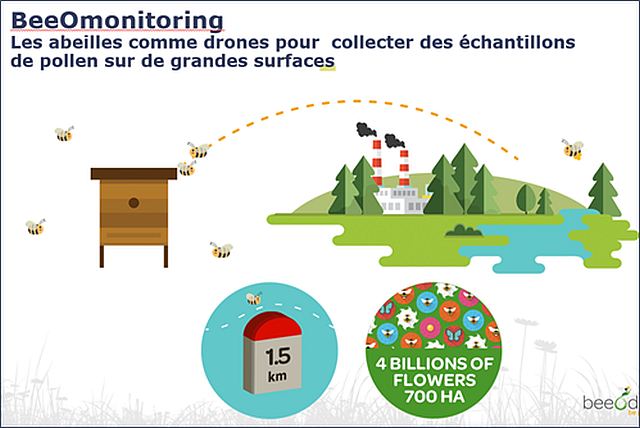
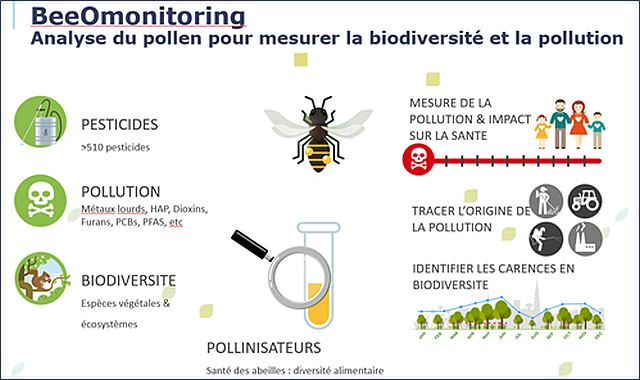
AIVP – What made you decide to join AIVP, and what are you expecting to get from our worldwide network?
Dr. Bach Kim Nguyen & Michael van Cutsem, BeeOdiversity – We already work with cities and ports to preserve and regenerate biodiversity and air quality. So it was a natural choice to join AIVP. Like AIVP, we believe that (i) the solution is collective, (ii) regenerating biodiversity and promoting regions and territories creates economic and social value. We are therefore committed to building the sustainable cities and ports of the future.
Local and regional authorities. BeeOmonitoring is of interest to them for various reasons: detecting pollution and loss of biodiversity, scientific indicators providing detailed feedback on actions already taken and monitoring, advice on possible targeted improvements based on results, biodiversity and air quality, the well-being of citizens, and the way the area is perceived, attractiveness.
- identification, source, and impact of heavy metals and pesticides
- identification of different pollens/honey resources = quantity (including any deficiencies) and quality of plant biodiversity – over the four periods analysed
- proposals for a strategy and/or action plan (based on data collected), including stakeholders:
- planting by citizens, giving them an active role in the local authority’s biodiversity project;
- targeted planting, to address any plant shortages observed at certain times;
- creation of test areas with farmers in the area or its periphery, with more environmentally-friendly alternatives, while maintaining the quality and economic value of production.
Port stakeholders (public institutions, State and local authorities, economic operators). BeeOmonitoring is of interest to them, in the same way as local and regional authorities. Ports also have the advantage of being the interface point where numerous different sectors meet: industry, logistics, river and coastal transport, territorial development. In addition, their political and legal structures involve public and private sector stakeholders.
AIVP – What do you believe you can bring to AIVP?
Dr. Bach Kim Nguyen & Michael van Cutsem, BeeOdiversity – We can help to improve relations between cities and ports even further, by establishing and developing dialogue and cooperation. Our advisory role and strategic and operational solutions can support AIVP members in their efforts to find pro-environment, pro-biodiversity solutions, to build port cities that reflect the aspirations of their residents.
In line with the AIVP Agenda 2030 for sustainable development of port cities, BeeOdiversity will support the actions of cities and ports in three key areas: “8. City port interface”, “9. Health and quality of life”, “10. Protecting biodiversity”. Our aim is to play an active role within AIVP, to promote improved understanding of the importance, solutions, and services provided by biodiversity, in order to encourage and support programmes and projects aimed at preserving, restoring, compensating, and developing biodiversity in City Port territories:
- Improving the water quality of dock basins. Developing green infrastructures.
- Assessing existing biodiversity in the City Port territory. BeeOmonitoring.
- Avoiding any destruction of sensitive natural habitats when developing the terrestrial or aquatic footprint of ports. Advising on the development and management of sites.
- Supporting civil society’s actions to prevent biodiversity in City Port territories. Communicating data and raising awareness to actively involve citizens.
AIVP – You recently highlighted the threat posed by invasive species to local biodiversity. We have previously drawn attention to this issue in relation to sailing. What are the prospects on land, and what solutions does BeeOdiversity propose?
Dr. Bach Kim Nguyen & Michael van Cutsem, BeeOdiversity – Japanese knotweed, Asian hornets, beavers, bullfrogs…Invasive species are the third biggest cause of biodiversity loss worldwide. According to the red list of the International Union for Conservation of Nature (IUCN), they are at least partly responsible for half of all known extinctions, and represent a threat to nearly a third of rare terrestrial species. It is a concerning problem, given how difficult it is to do anything about it once these species are established.
Our indigenous species, meanwhile, are highly vulnerable to the development of these invasive species, as in many cases they have no effective defence mechanisms and no longer have sufficient space in which to develop, as the areas they might otherwise expand into are already occupied by the invaders. In addition, invasive species are usually more competitive and voracious. Some can carry new pathogens that may be dangerous, both for indigenous species and for humans. They may also alter the balance of existing ecosystems by changing the properties of soil or water, or disrupting natural habitats. Every year, the damage caused by invasive species costs the world 26.8 billion dollars.
How can we protect against invasive exotic species? BeeOdiversity helps to choose the right solution for protecting the environment from invasive species. We carry out environmental analyses, including via BeeOmonitoring: by identifying the species present at a site, we can then diagnose the existing state of biodiversity in that area. Next, we analyse practices, requirements, and constraints, in order to recommend specific, bespoke actions to protect plant and animal species that are beneficial to the ecosystem and the territory. By identifying invasive species and the way they develop, an appropriate management approach can be adopted. For example, mechanical control is an effective method for combatting invasive species locally. Awareness and educational activities and events can also be organised.
AIVP – We see that you have collaborated with other AIVP members like Suez and developed projects in Brussels near the port, like Docks Bruxsel. Can you tell us more about these projects, and what they were designed to achieve?
Dr. Bach Kim Nguyen & Michael van Cutsem, BeeOdiversity – Suez operates sites that produce and process water (potable water, waste water) and waste, on behalf of local and regional authorities. Suez is keen to promote sustainable practices that positively impact the preservation of water resources, and maintain and improve air quality. BeeOdiversity is helping Suez to achieve its objectives at its sites and across the territory. We are deploying BeeOmonitoring in those locations to diagnose the existing state of biodiversity and pollution, in order to then recommend ways of improving the environment. We have proposed actions designed to improve biodiversity at sites, and encouraged the sharing of findings and indicators with stakeholders (the city, farmers, residents, etc.) to generate a “local project”. Communications actions have also been deployed at the local mayors and communities exhibition.
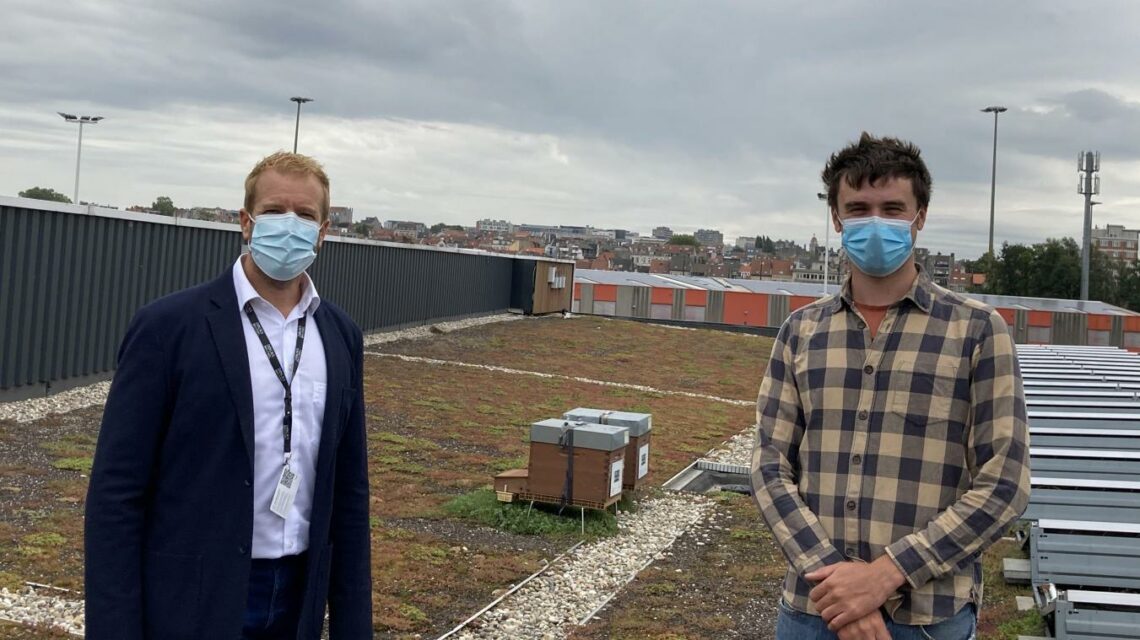
Docks Bruxsel is a shopping mall with several retail chains, a cinema, and restaurants. The project aimed to create a major sustainable real estate development with a positive impact in the centre of Brussels. BeeOdiversity conducted environmental monitoring at the site, and across the wider area, with dual aims: to improve the site’s environmental quality and bring stakeholders on board. Finally, actions to raise awareness among customers and residents were carried out, focusing on the need to preserve biodiversity and bees, and the products sold – for example, by explaining how pollination by bees contributes to the production of foodstuffs and cosmetics sold in the shopping centre.

